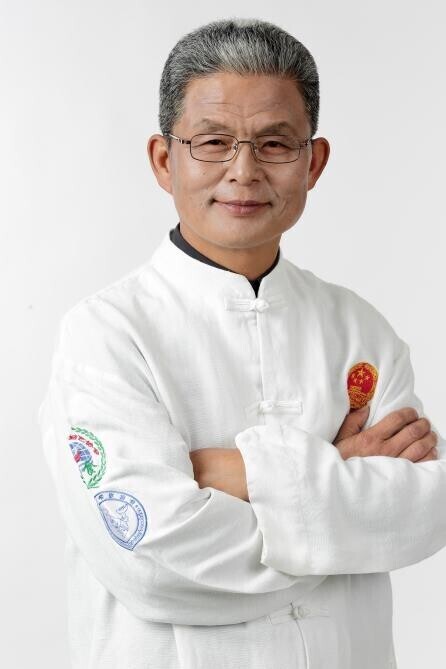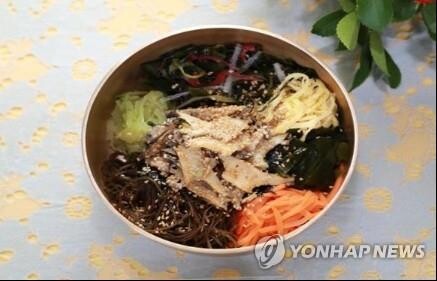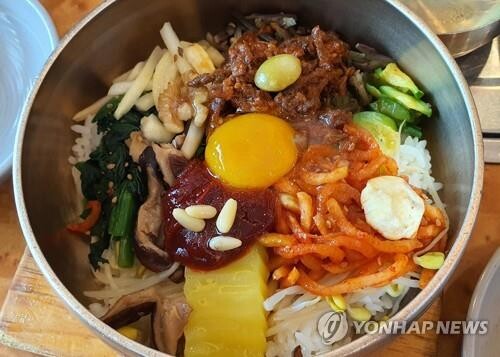*Editor’s note: K-VIBE invites experts from various K-culture sectors to share their extraordinary discovery about the Korean culture.
Choi Man-soon's Medicinal K-Food: The Harmony in Bibimbap
By Choi Man-soon, Food Columnist and Director of the Korea Traditional Medicine Food Research Institute

Bibimbap is considered one of the most healthful dishes, embodying an ideal balance of nutrition and harmony. According to the New England Journal of Medicine, an optimal diet for longevity involves high vegetable intake and low meat consumption—a composition that is perfectly reflected in bibimbap, typically made of 80% vegetables and 20% meat.
In Korean cuisine, harmony is achieved by enhancing each ingredient’s unique characteristics while creating a unified flavor. This mirrors the way British translator Deborah Smith brought Han Kang's The Vegetarian to global acclaim by understanding the author’s distinct style and blending it with Western sensibilities, creating a translation that harmonizes with the original work. Bibimbap’s inclusion as a flagship in-flight meal on Korean airlines is likely for similar reasons—it represents the balance and universal appeal of Korean cuisine.
 |
| ▲ This undated Yonhap file photo shows South Korean traditional bibimbap. (Yonhap) |
Bibimbap is deeply ingrained in Korean daily life. For many Koreans, bibimbap brings back memories of packed school lunches. In winter, students would place their metal lunchboxes on classroom heaters to warm them up, occasionally swapping the top and bottom layers for even heating. When lunchtime arrived, they would shake the lunchboxes to mix the rice and toppings, creating a perfectly warm bibimbap that released savory steam upon opening. Some families even pre-arranged their bibimbap by layering seasoned vegetables at the bottom, followed by a drizzle of sesame oil and red pepper paste, then topped with rice and occasionally a fried egg for an extra touch.
◇ The Balance of Five Organs, Colors, and Flavors in Bibimbap
In the classic Art of War, Sun Tzu identifies five essential elements for victory, with the fifth being "organization" or "law" (法), which emphasizes that even the largest army is ineffective without structure and coordination. Just as an army requires organization, so does food—requiring harmony in its ingredients, their seasonal compatibility, and balance in preparation.
Bibimbap exemplifies this principle of harmony through its combination of five colors and flavors, reflecting the interplay of the Five Organs in traditional East Asian medicine. According to the Huangdi Neijing (Yellow Emperor’s Inner Canon), the philosophy of yin and yang provides a universal law, with five colors and flavors supporting the balance of the body’s internal organs:
Yellow - Associated with the spleen, harmonized with sweet flavors.
Green - Linked to the liver, matched with sour tastes.
Black - Connected to the kidneys, paired with salty flavors.
Red - Corresponds to the heart, complemented by bitter tastes.
White - Related to the lungs, balanced with pungent flavors.
These principles guide seasonal and dietary choices in bibimbap:
Spring: Prioritize white and yellow vegetables, while minimizing greens.
Summer: Favor white and black vegetables, reducing reds.
Monsoon Season: Increase black and green vegetables, reduce yellows.
Autumn: Emphasize green and red vegetables, with fewer whites.
Winter: Increase red and yellow vegetables, minimizing black.
Furthermore, different meats are paired based on the body's needs:
Spleen: Beef is recommended for those with a weak spleen.
Liver: Goat meat supports the liver.
Kidneys: Pork is suited for kidney health.
Heart: Lamb is ideal for heart support.
Lungs: Chicken benefits the lungs.
Through these guidelines, bibimbap becomes not only a nutritional dish but also a culinary representation of harmony, aligning the body’s needs with nature’s rhythm. The blend of colors, flavors, and seasonal ingredients elevates bibimbap to more than just a meal—it’s a practice of health, balance, and tradition.
◇ The Origins of Bibimbap
The exact origins of bibimbap are uncertain, but it is generally thought to have evolved from ancient ceremonial practices in which various foods offered at ancestral rites were mixed together and eaten. Though specific records of bibimbap began to appear in the late 19th century, three main theories explain its development:
Ancestral Rites Tradition: Bibimbap is believed to have originated from Korea’s unique ritual practices. After preparing and offering rice, meat, fish, and vegetables at the ancestral table, family members would mix the foods together, which led to the creation of bibimbap as we know it today.
End-of-Year Leftovers: Another theory suggests that bibimbap developed from a year-end tradition where leftover foods were combined to avoid welcoming the new year with any remnants. This mixture of rice and side dishes was enjoyed as a late-night snack to clear the table before the new year.
Field Meal Tradition: Bibimbap is also said to have originated from a communal tradition in farming communities. During planting and harvest seasons, people often helped each other through a custom called pumasi, where they gathered in the fields with food, mixing ingredients on the spot for efficiency and ease.
In Oju Yeonmun Jangjeon Sango (五洲衍文長箋散稿), written by Lee Kyu-gyeong (1788–1856), bibimbap variations like vegetable bibimbap, raw fish bibimbap, shrimp bibimbap, and crab bibimbap are documented. These variations highlight the diversity of bibimbap through different ingredients and regional adaptations.
Each region in Korea has its own unique take on bibimbap, each reflecting local flavors and traditions:
Jeonju Bibimbap: Known for its extensive variety of ingredients, Jeonju bibimbap includes over 20 types of vegetables and meats. The rice is cooked with beef broth, and bean sprouts are added for subtle flavor. It’s seasoned with soy sauce, gochujang (red pepper paste), and sesame oil, with raw beef on top. Seasonal ingredients like mung bean jelly in spring or perilla leaves in autumn add a taste of the changing seasons.
Jinju Bibimbap: Sometimes called hwaban (flower rice) due to its colorful array of seasonal vegetables, Jinju bibimbap often comes with a side of seonji-tangguk (soup with clotted ox blood), adding a distinct regional touch.
Andong Heotjesatbap: Known as “fake ceremonial bibimbap,” it replicates dishes from ancestral rites with a mix of meats and vegetables. Ingredients include tang (soup with radish and beef), sanjeok (skewered beef), dried pollack, and shark meat, which is traditional in the region. Seasoning is kept simple, often just salt, soy sauce, sesame seeds, and sesame oil.
 |
| ▲ This undated Yonhap file photo shows Jeonju bibimbap. (Yonhap) |
Bibimbap is first documented in the Siui Jeonse (是議全書), an old Korean cookbook, which describes a traditional recipe as follows: "Prepare rice carefully, marinate and stir-fry the meat, and fry the dried fish in slices. Stir-fry a variety of vegetables, and fry high-quality kelp to a crisp, crumbling it on top. Mix all ingredients into the rice, adding plenty of sesame seeds and oil, then place in a bowl. Top it with fried egg slices cut to the size of game pieces, and add small, meat-filled dumplings coated in flour and egg. Serve with a flavorful soup made from assorted ingredients."
Bibimbap's global popularity has also been bolstered by endorsements from international celebrities. Hollywood star Gwyneth Paltrow has highlighted bibimbap as one of her secrets for maintaining a slim figure. She revealed in a television appearance that among various diet options, she particularly enjoys Korean bibimbap. Her former chef, Lee Gross, shared that she enjoys bibimbap with white rice, soybean sprouts, napa cabbage, kimchi, and tofu.
Michael Jackson, during his visit to Korea, also praised bibimbap, commenting that it was the Korean dish he enjoyed the most. With such high-profile endorsements, bibimbap has gained recognition as a quintessential 21st-century health food, beloved worldwide for its balance of flavors and nutritional value.
(C) Yonhap News Agency. All Rights Reserved



































